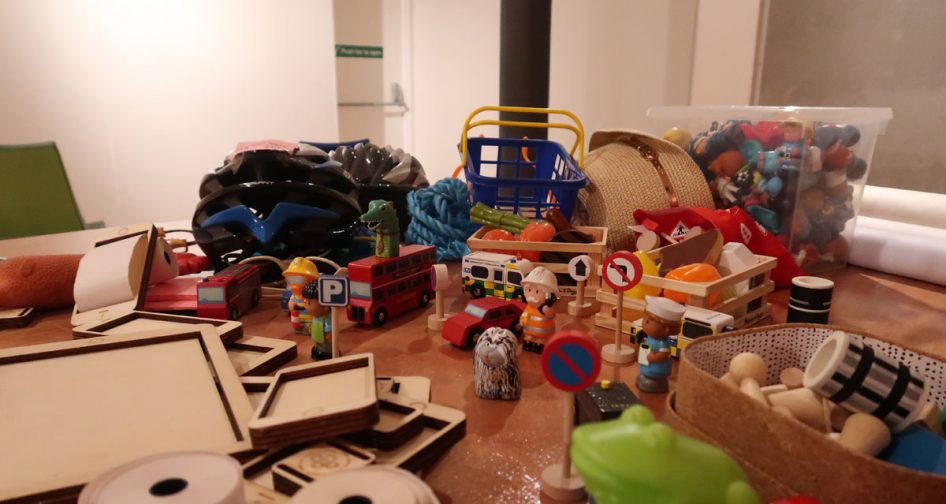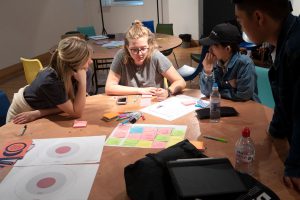How do you teach 25 students service design in 2 days?
How many opportunities have you had to ‘learn by doing’ rather than ‘learn by listening or reading’ in an educational setting? Unless you’re one of the lucky ones, the answer is probably ‘a handful’. As an intern at Snook (aka a Snookster), I’ve been a part of two hacks. For those unfamiliar with what a hack is, it’s a process in which people work in groups to address a real-life problem. They do research by observing and talking to people, define the problem, and freely explore options to create and test prototypes that offer a solution – all within a very short period of time.
A hack is laid out to be an experience that enables learning as participants submerge in an active cycle of critical and creative tasks. On this occasion, we used the hack format to deliver a two-day service design training, aiming to teach 25 Industrial Design students from Auburn University the Double Diamond method (Discover, Define, Develop and Deliver). Instead of a sit down lecture, the students became familiar with the theory by directly applying it to a real life problem put forward by Sustrans: how can we help more students in Glasgow to walk and cycle?
Everyday problems need unconventional and practical solutions
Five teams explored the connection between cycling and walking in the city, focusing on topics like pollution, health, weather, infrastructure, safety and security. The wonderful Glasgow weather inspired the team ‘Pronto’ to create an app that provides not only a map, but simultaneously the weather forecast when planning a trip. To avoid theft, team ‘Stealth’ developed the idea of offering a ‘de-pimp your bike’-service. Consulting with users through a cardboard shop front, Stealth’s service offers the removal of branding, painting, and adding of ‘rust’ to keep bikes secure, all reversible to allow the bike to be sold again if required.
Auburn Hack from Snook on Vimeo.
Research in the real world: former thieves know what they’re talking about.
As a Social Anthropologist, I recognise the importance of not jumping to conclusions and understanding problems from people’s point of view. This can only be achieved through real-life experience and cannot be replicated by simply reading about it. All five teams were confronted, at least once, with an unexpected result or response from the people they talked to and tested their prototypes with.
For example, the team that focused on security issues were initially keen to work on the design of a lock that would eliminate the possibility of bike theft. Lucky for them, they met the owner of a bike shop, who also happened to be a former bike thief. Hearing this person’s point of view pushed them to reconsider their take on how to address the problem.

Toys for research …really?
As an academic, you may not always have the time and space to explore creative practice.
Activities like rapid ideation or bodystorming really sparked the students’ creative thinking and boosted their energy levels. Quoting Maya Angelou: “you can’t use up creativity… the more you use, the more you have”. Offering students the opportunity to play, to have fun, and to think outside the box, widened their view on how problems can be approached.

Students used toys to create prototypes and to find appealing ways to interact with people. Team ‘Bikes Belong’ went out to the street with a sign and props that invited both bikers and pedestrians to participate either just by saying yes or no, or stoping and sharing their view. Hearing people’s stories and seeing them interact with their prototypes pushed the students to reconsider their take on how to address the problem bringing their ideas closer to what would work in real life.
Learning more than methods and techniques
Hacks not only offer a hands-on approach to learning, but also allow time to reflect on what’s being discovered, defined, developed, and delivered. As stated by John Dewey: “we do not learn from experience… we learn from reflecting on experience.” Throughout the hack, the students didn’t just learn about design methods and tools, but also about the importance of being open-minded and flexible, the value of connecting with the user, and the crucial role of teamwork.
As a masters student of adult education, I now acknowledge the power a hack can have as an educational method. Hacks don’t imply high cost, don’t require lots of time, and most importantly have practice and reflection at the core of the learning experience.

